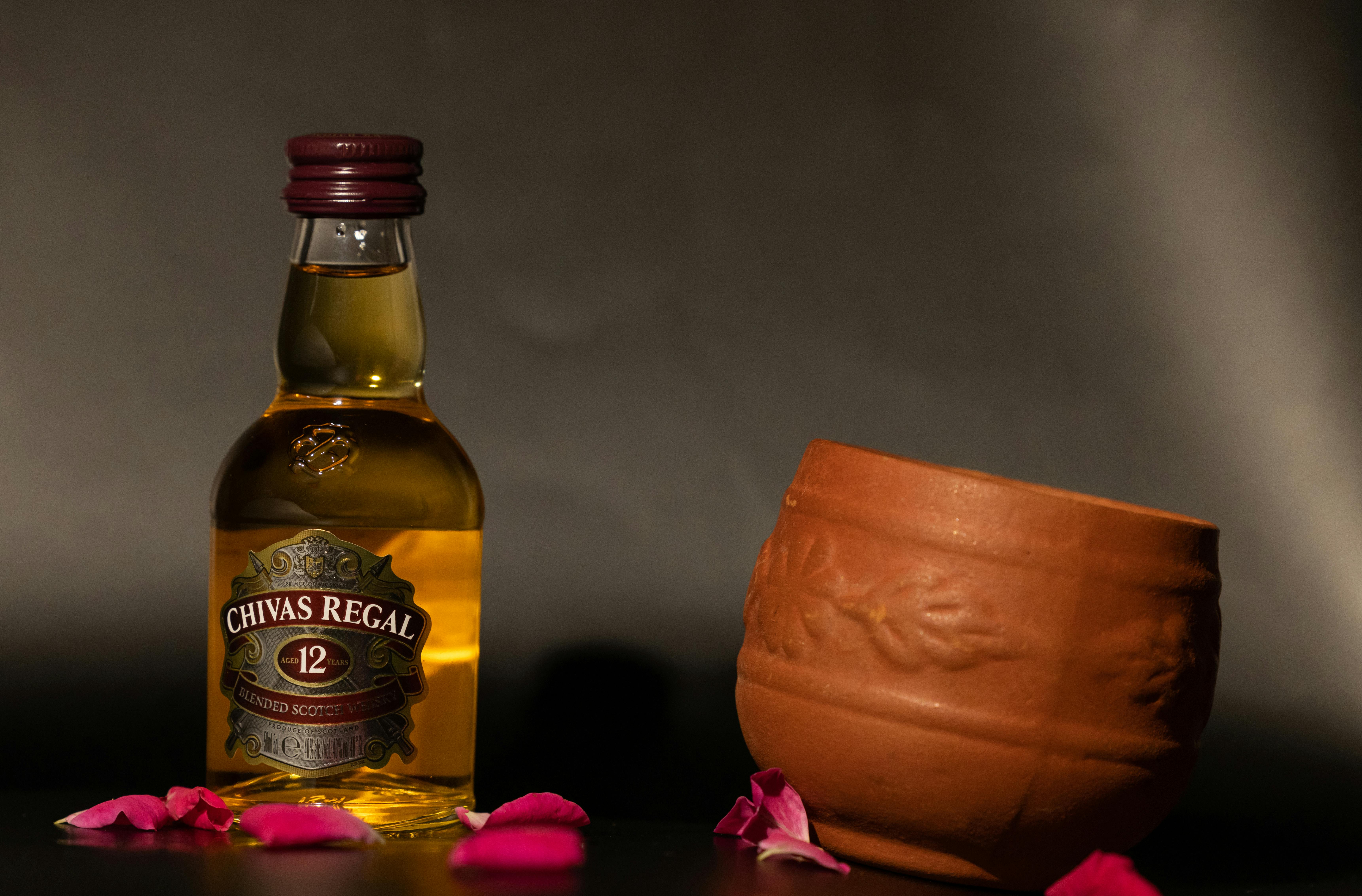Distilling alcohol is a process used to separate the components of a liquid. It involves boiling the liquid, collecting the vapors produced, and then condensing them back into a liquid form. Through this process, higher-proof alcohol can be made from lower-proof alcohol or other alcoholic beverages. Distilling alcohol is an ancient art that has been used for centuries to make various types of spirits, such as whiskey and brandy. There are many different methods and techniques that can be used to distill alcohol, but all involve some form of boiling and condensing. In this article, we will explore the basics of how to distill alcohol.Distilling alcohol at home is possible but it is illegal in many countries. To distill alcohol at home, you will need access to a still and you must be aware of the applicable laws in your area. To start, you will need a fermenting agent such as yeast and a sugar source, like fruit juice or honey. Once these ingredients are combined, the mixture needs to be sealed and left for several days to ferment. When the fermentation process is complete, the mixture can be heated and distilled using a still. As the liquid boils, it vaporizes and the vapor passes through a tube that cools it down, which causes the vapor to condense into liquid form again. This liquid is your distilled alcohol. It is important to take proper safety precautions when distilling alcohol at home and remember that it is illegal in many places.
Distilling Alcohol
Distilling alcohol is a process used to create higher proof spirits such as whiskey, vodka, and gin. It involves the separation of alcohol from other substances by heating the mixture, collecting the resulting vapor and cooling it until it condenses. To distill alcohol, there are several pieces of equipment needed including a still, a heat source, an airlock or fermentation lock, tubing and containers.
Still
A still is the main piece of equipment used in distilling alcohol. It is essentially a large container with a top and bottom portion that separates the liquid from the vapor during heating. The still may be made from either copper or stainless steel and must be large enough to hold the desired amount of liquid. Most stills also come with an attached thermometer to measure the temperature of the liquid as it heats up.
Heat Source
The next piece of equipment needed for distilling alcohol is a heat source. This can be either an open flame or an electric element depending on what type of still you have. An open flame will work best when using a copper still
How Does the Distillation Process Work?
Distillation is the process of separating liquids based on their different boiling points. The distillation process involves heating, condensing, and collecting the liquid vapors created by the boiling liquid. The vapors are then cooled and condensed back into a liquid form. This process can be used to purify liquids or separate them into groups of different substances.
The most common type of distillation is simple distillation, which involves boiling a liquid in a container and then condensing it into another container. In this process, the container with the heated liquid is called the still and the condenser collects the vapor as it rises from the still. The vapor is then cooled and collected in a separate container as a liquid.
The simple distillation process works by separating out components that have different boiling points. As the heated mixture boils, its components vaporize at different temperatures and are collected separately in different containers. This allows for separation of liquids based on their boiling points, allowing for various applications such as purifying water or separating mixtures of alcohols from wines or beers.
Fractional distillation is a more advanced form
Distillation
Distillation is a process used to separate components of a liquid mixture based on their different boiling points. It is one of the oldest and most widely used methods for separating and purifying liquids. Distillation can be used to produce a variety of products, including essential oils, alcoholic beverages, and many other products. There are several different types of distillation that can be used depending on the desired product.
Fractional Distillation
Fractional distillation is the most common type of distillation used in industry. It uses temperatures and pressure to separate different components of a mixture. This type of distillation is often used to separate crude oil into its useful components, such as gasoline and diesel fuel. Fractional distillation can also be used to produce essential oils from plants, such as lavender or jasmine.
Steam Distillation
Steam distillation is another type of distillation that uses steam to separate compounds from a liquid mixture. In this process, steam is passed through the liquid mixture, which causes the volatile
What Is the Purpose of Distilling Alcohol?
The purpose of distilling alcohol is to produce a higher concentration of ethanol in liquid form. This process is commonly used to create alcoholic beverages, such as whiskey, vodka, and rum. By removing impurities and concentrating the alcohol content, distillation can create a beverage that is more potent and flavorful than what can be achieved through fermentation alone. Distillation also allows producers to control the flavor profile of the final product by adjusting temperatures and other variables. Additionally, distillation can be used to create essential oils and perfumes, as well as fuel for industrial purposes.

Fermentation vs. Distillation
Fermentation and distillation are two processes that are used to produce alcoholic beverages. Both processes involve the conversion of sugars into alcohol, but they differ in the way they go about it. Fermentation is a chemical process that uses yeasts or bacteria to convert sugars into alcohol and carbon dioxide. Distillation is a physical process that uses heat to separate the components of a liquid mixture and purify them by removing impurities such as water or toxins.
Fermentation is the process used in making beer, wine, and cider. It begins with the introduction of yeast or bacteria to sugar-rich substances such as grain, fruit juice, or honey. The yeast or bacteria metabolize the sugar, converting it into alcohol and carbon dioxide. The resulting liquid is then left to age for several weeks or months in order for its flavor to develop further.
Distillation is the process used in making hard liquor such as vodka, whiskey, and rum. In this process, a mixture of fermented grains or fruits is heated until it turns into vapor. This vapor then passes through a condenser which cools it back down into liquid form. The resulting liquid contains
Safety Considerations for Distilling Alcohol at Home
Distilling alcohol at home can be a fun and rewarding experience, but it is also important to keep safety in mind. Many of the materials associated with distilling alcohol can be dangerous if not handled properly. Before attempting to distil alcohol at home, it is important to understand the risks associated with the process and take steps to minimize them. Here are some of the most important safety considerations when it comes to distilling alcohol at home:
Flammable Materials
Distilling alcohol requires the use of flammable materials such as ethanol, propane and butane. It is important to ensure that these materials are stored and used properly to avoid any potential accidents. When setting up the distillation process, it is essential to make sure that all flammable materials are located away from any potential sources of heat or flame. Additionally, it is important to have fire extinguishers on hand in case of an emergency.
Ventilation
When distilling alcohol at home, it is essential that proper ventilation is
How Is Moonshine Produced?
Moonshine is an alcoholic beverage that is produced by distilling fermented grain mash. The process involves boiling the mash in a still, which is a large vessel, and collecting the vaporized alcohol. This alcohol vapor is then condensed into liquid form and collected in a separate container. The resulting liquid is moonshine.
The process of moonshine production requires certain equipment and materials in order to be done safely and effectively. For starters, a still is required to boil the mash, as well as a condenser to collect the vaporized alcohol. In addition, additional equipment such as thermometers, hydrometers, fermentation vessels, and tubing are needed in order to monitor the process and ensure that the moonshine produced is safe for consumption.
In terms of materials, grains such as corn or rye are typically used for making moonshine. These grains are combined with water and yeast in order to create a mash that can then be distilled. In addition to grains, other ingredients such as sugar or honey can also be added to the mash in order to create flavor variations or increase the proof of the resulting moonshine

Conclusion
Distilling alcohol is a centuries-old practice that has become a popular hobby for many people. The process of distillation involves boiling an alcoholic liquid and then cooling it, which removes impurities and concentrates the alcohol content. This can be done with any type of alcoholic liquid such as beer, wine, or spirits. The final product will vary depending on the type of liquid used, the distillation method, and the skill of the distiller.
Distilling requires patience and attention to detail in order to achieve desired results. It is important to understand the process and adhere to safety regulations when producing your own distilled alcohol. With practice and dedication, you can create delicious spirits with high levels of proof in your own home.
Overall, distilling alcohol is an enjoyable hobby that yields tasty results. With a little know-how and careful attention to detail, you can create high quality spirits in no time at all. So grab your still and get started on mastering this exciting craft today!

